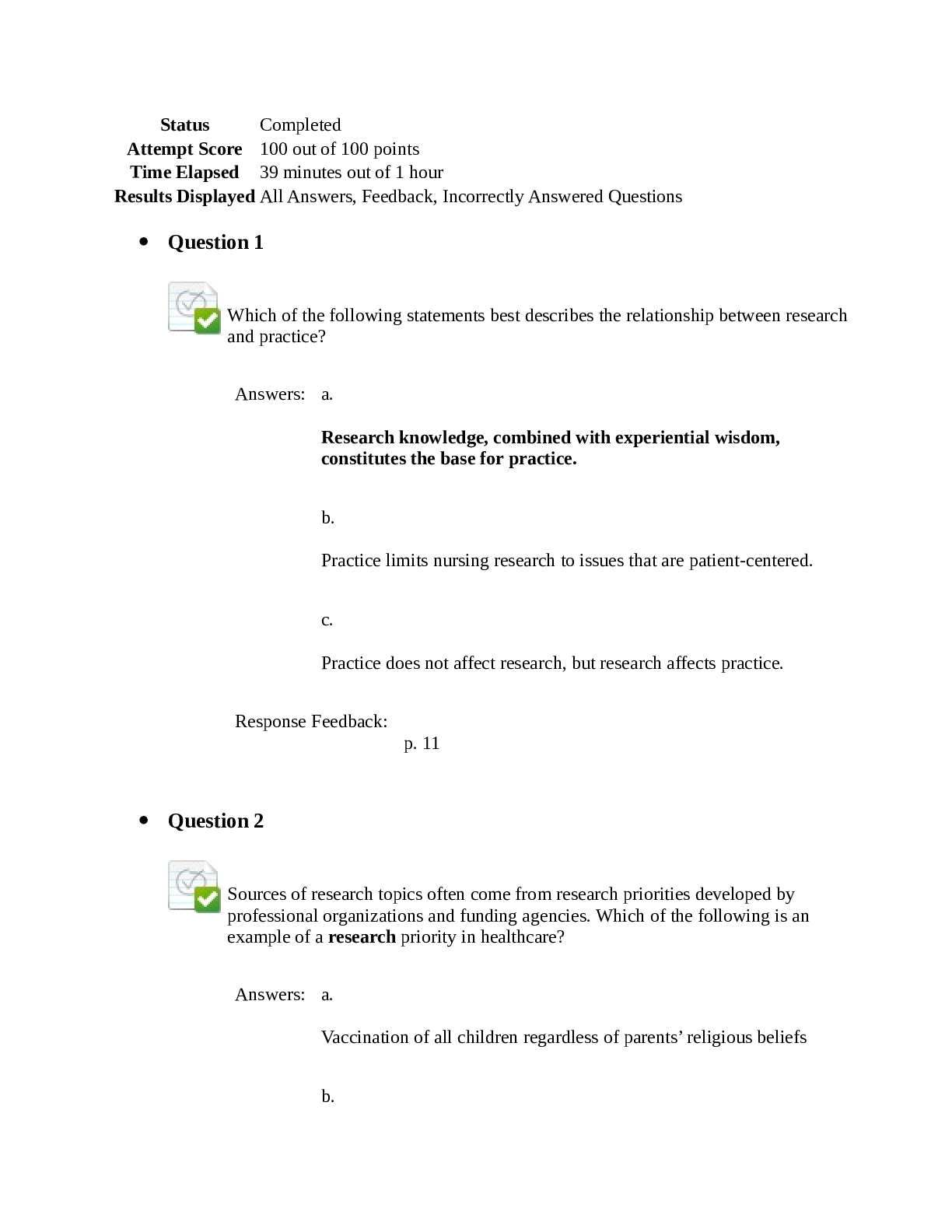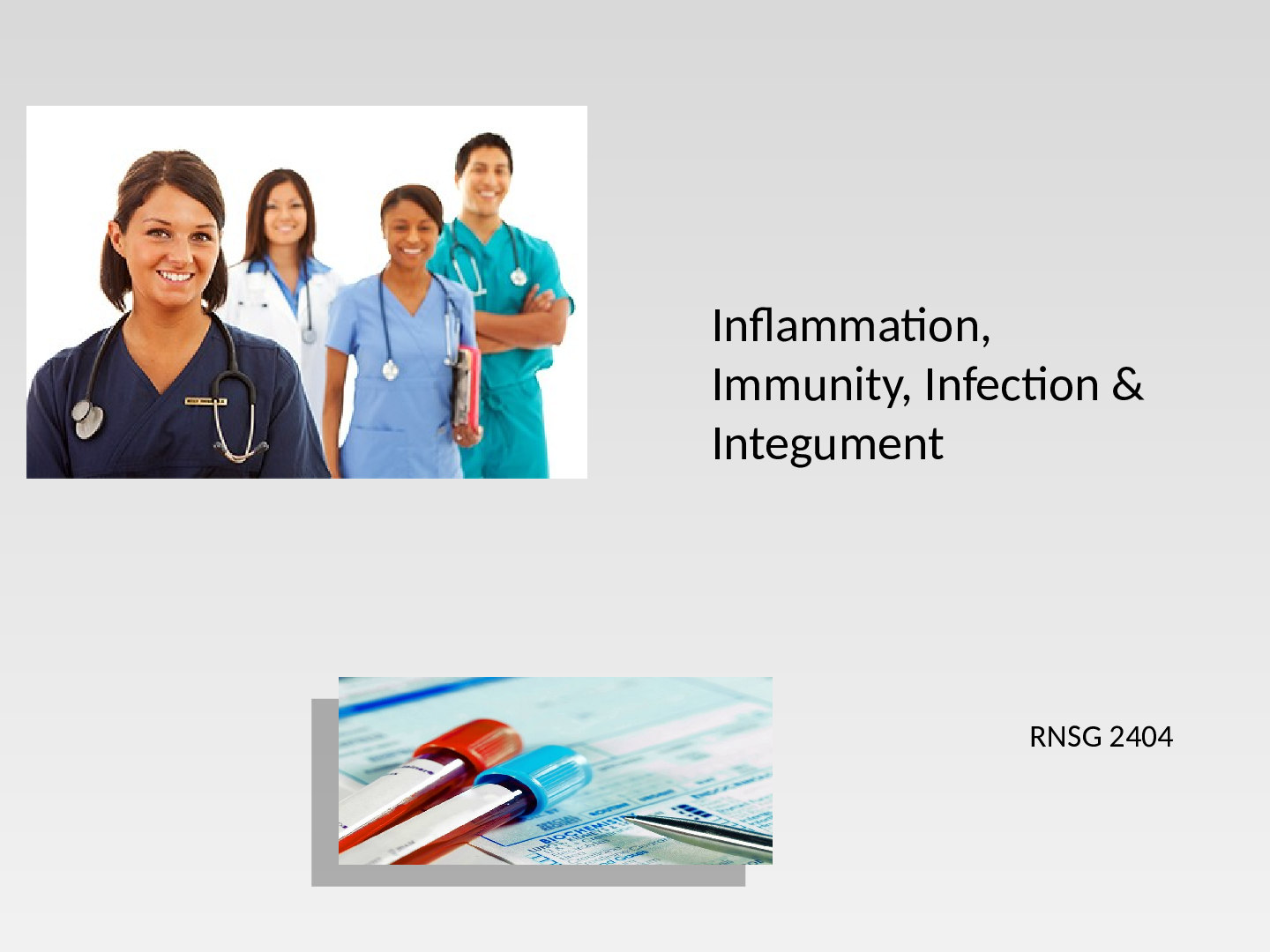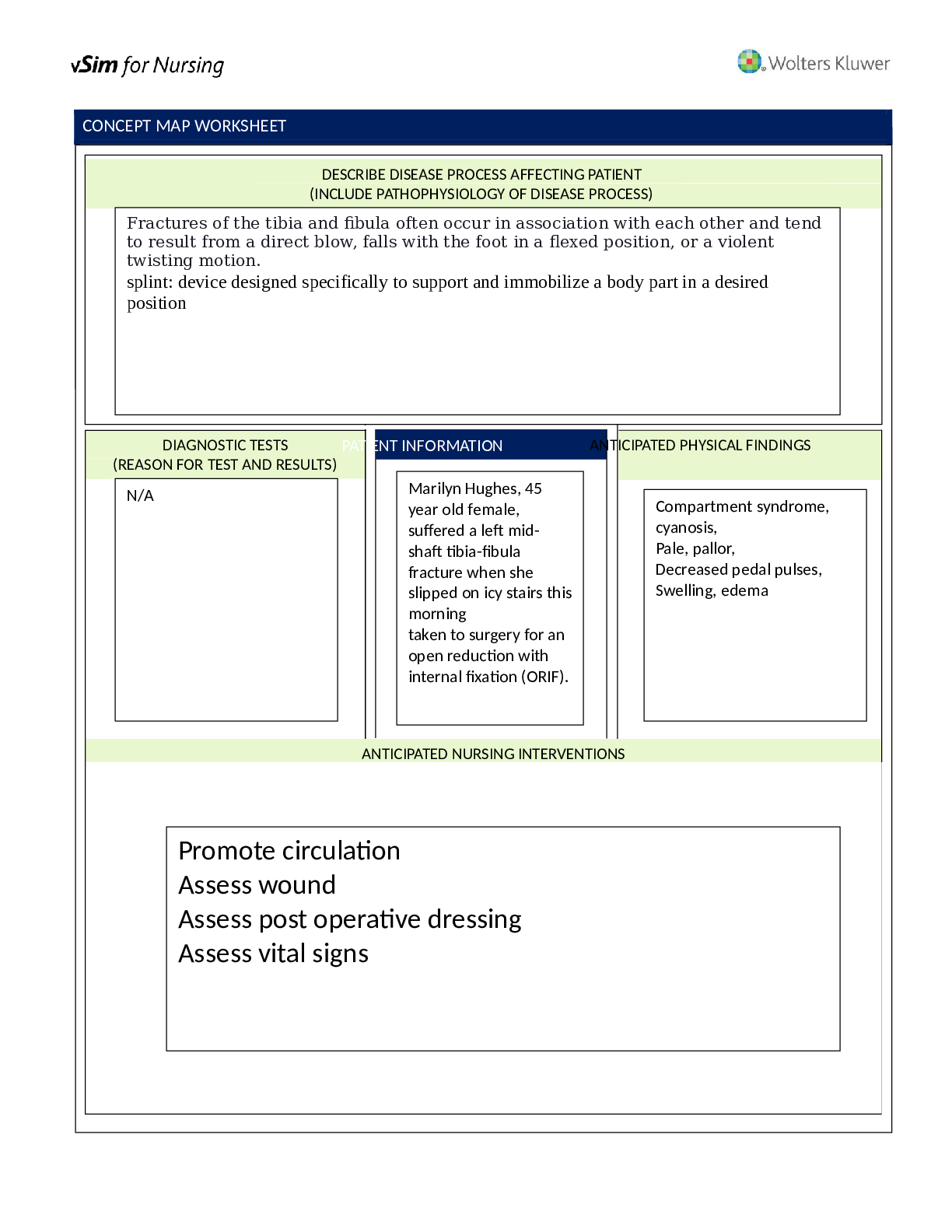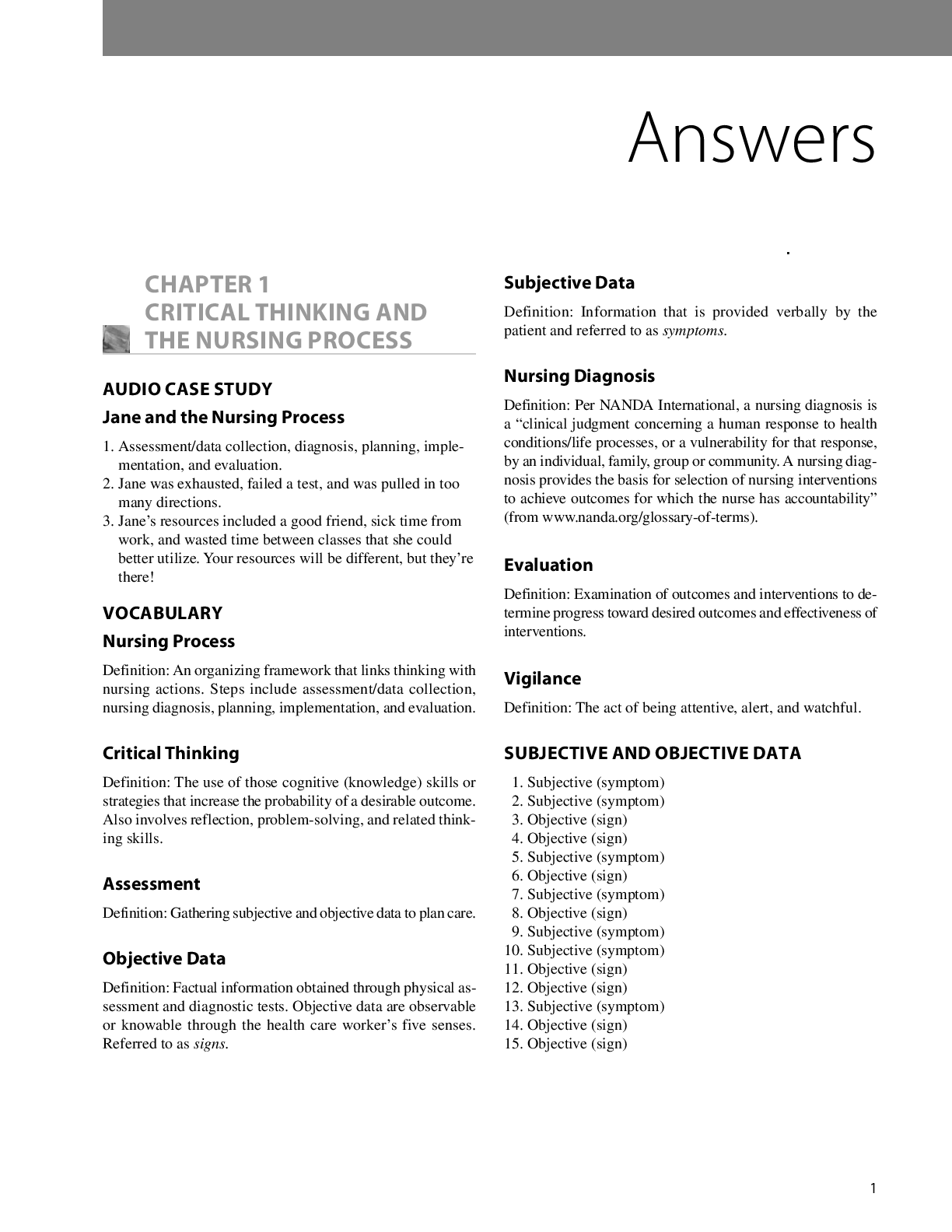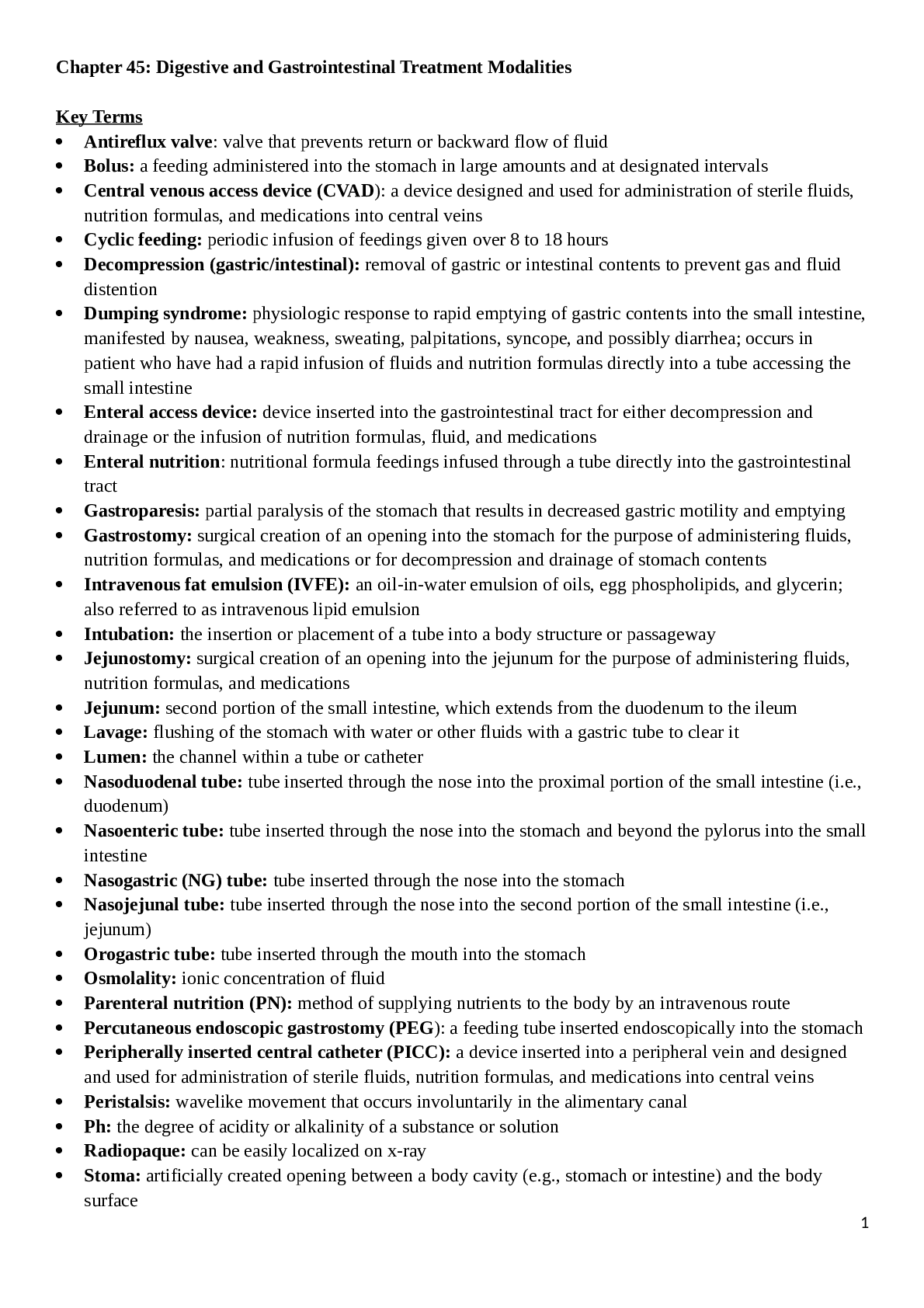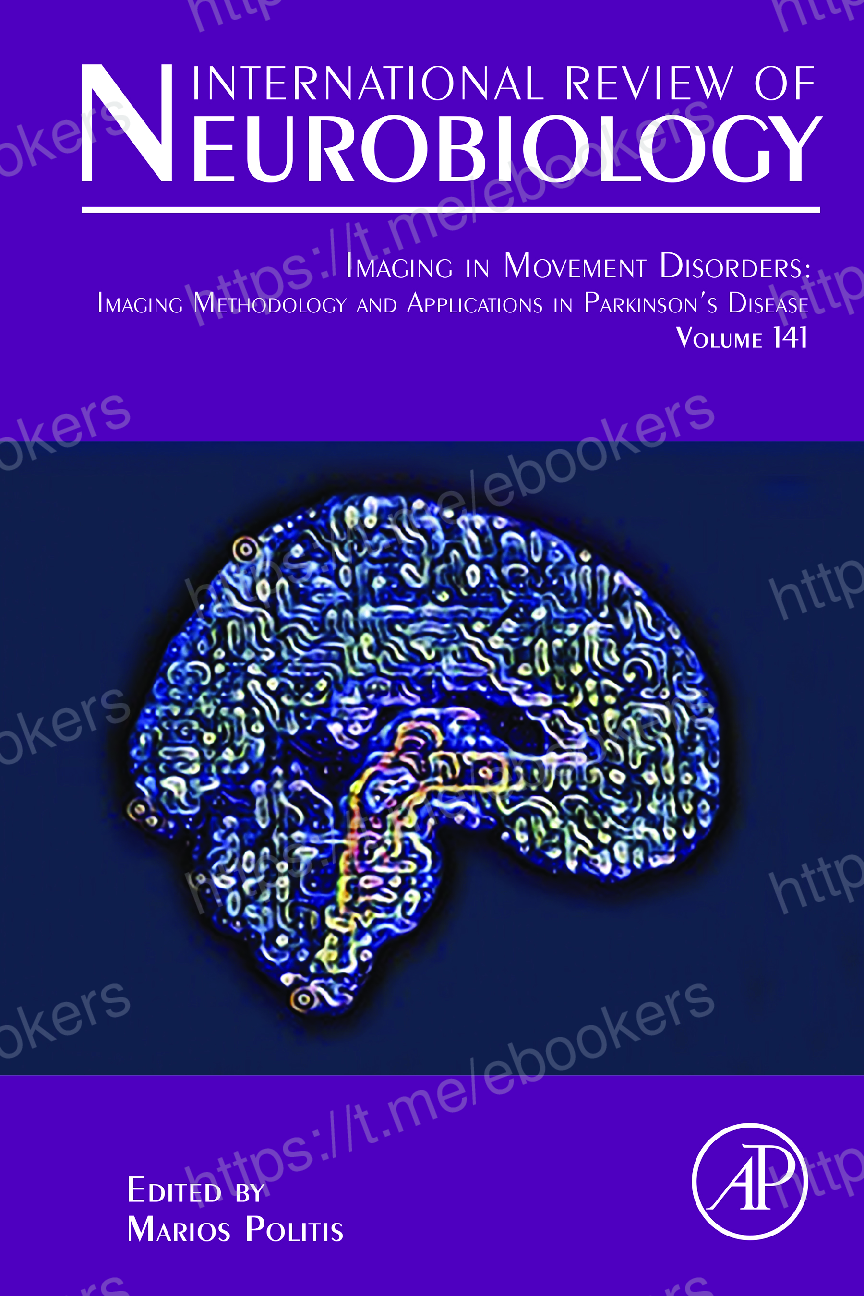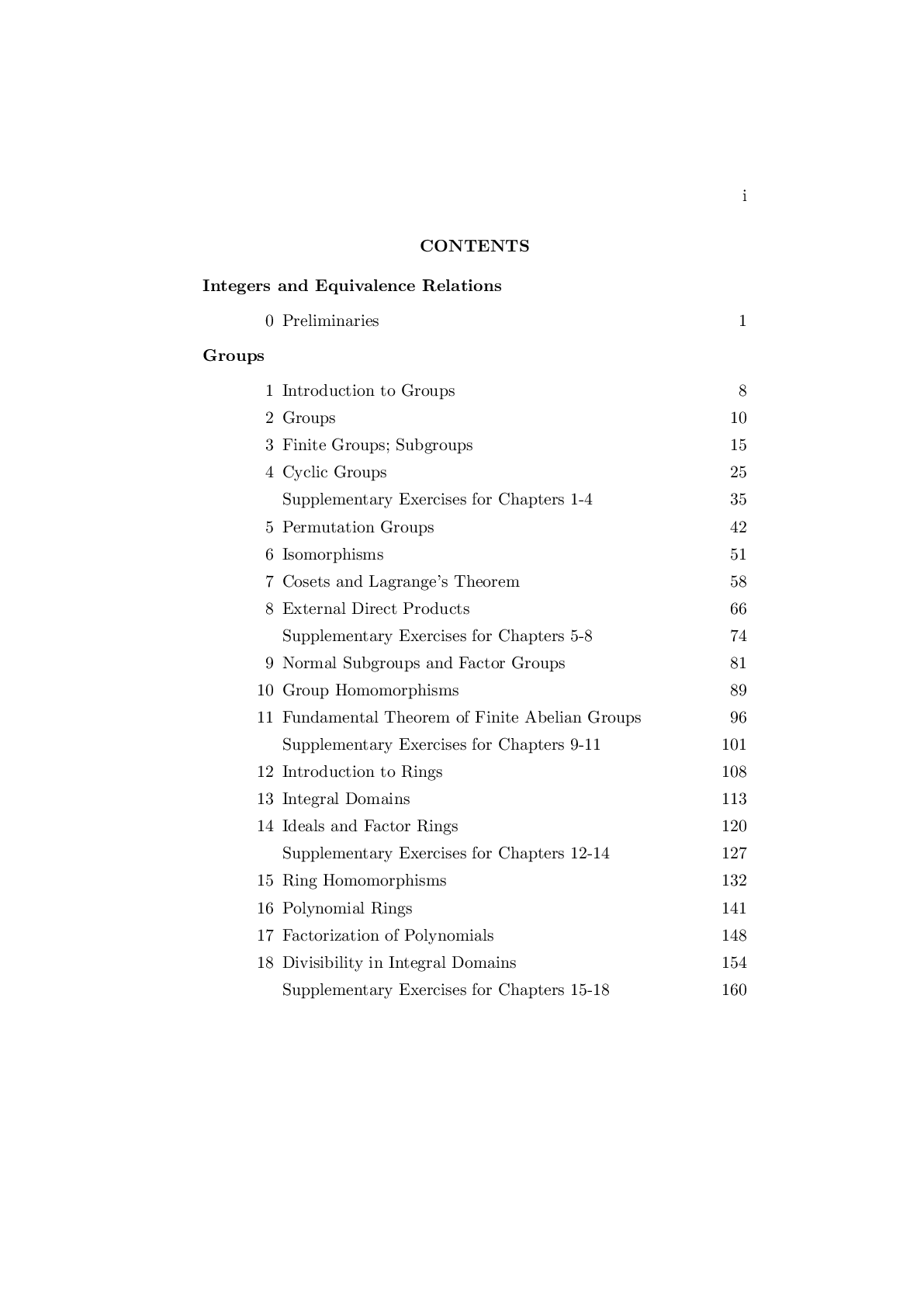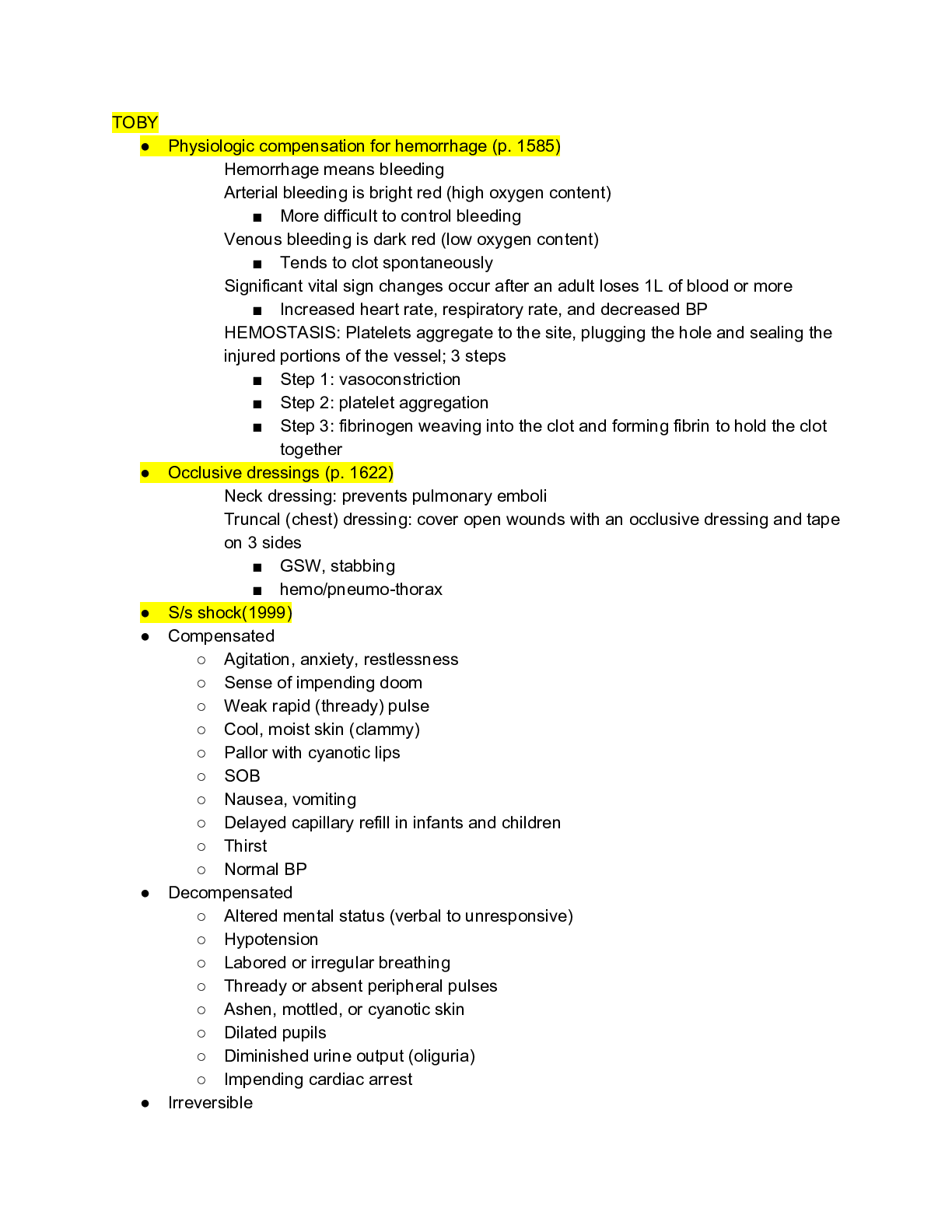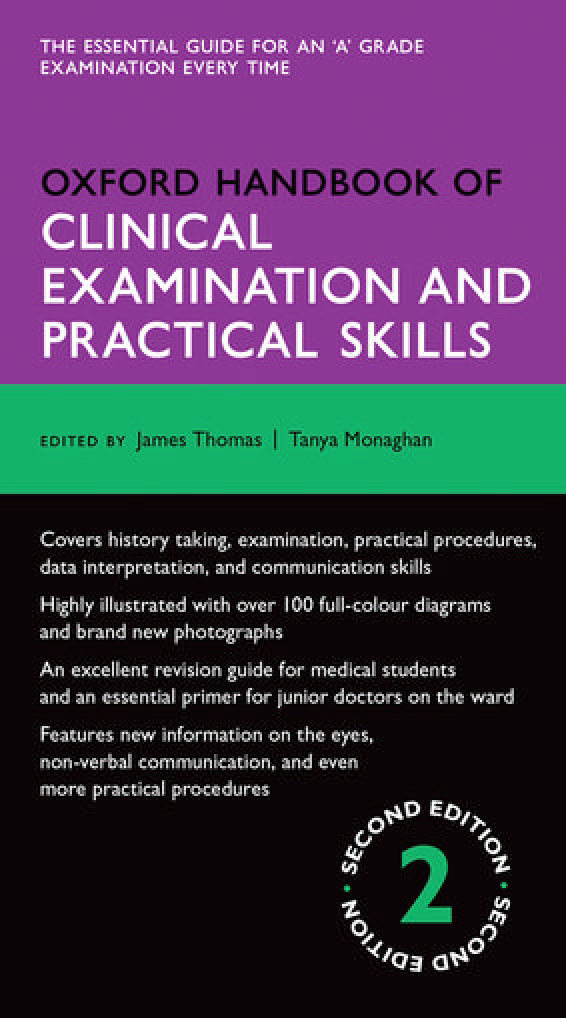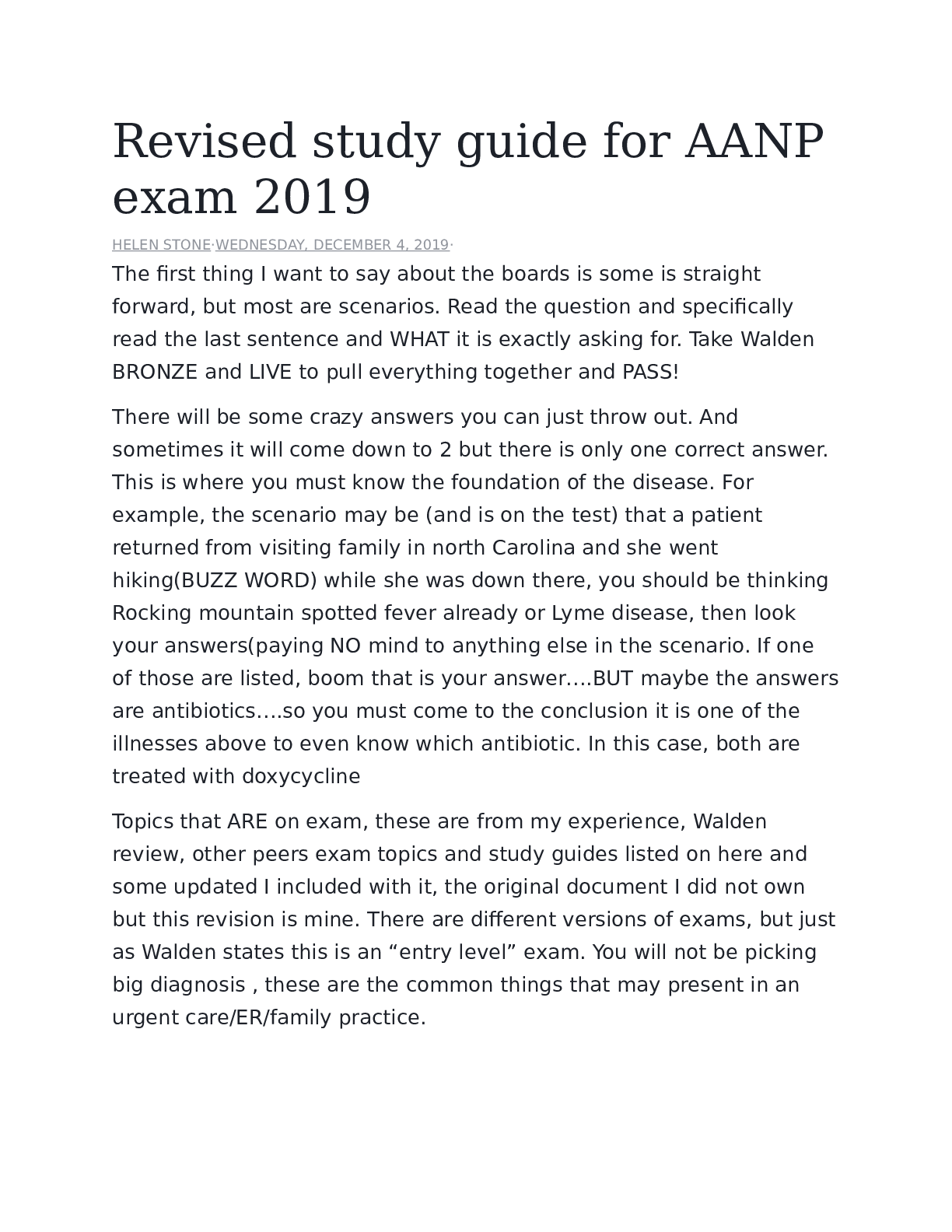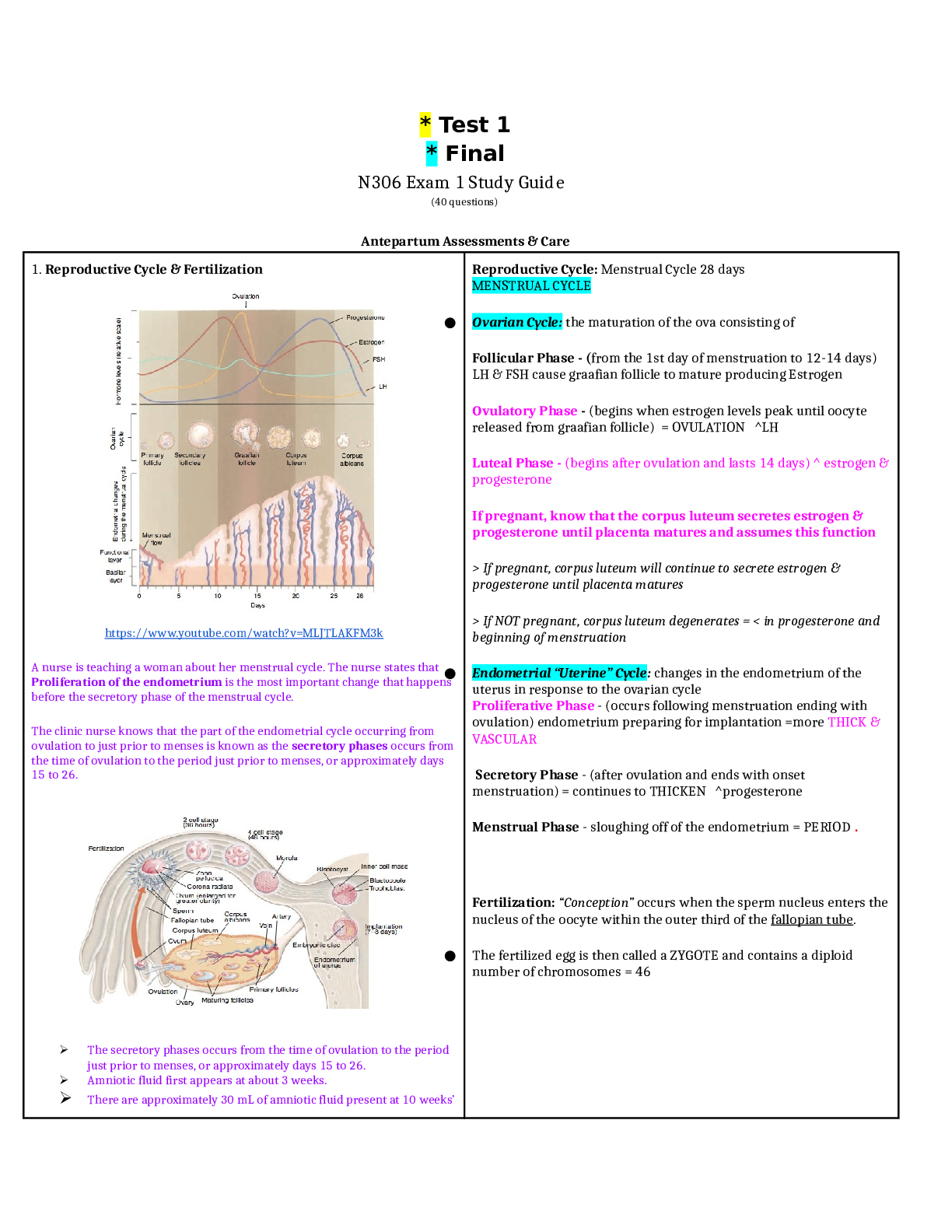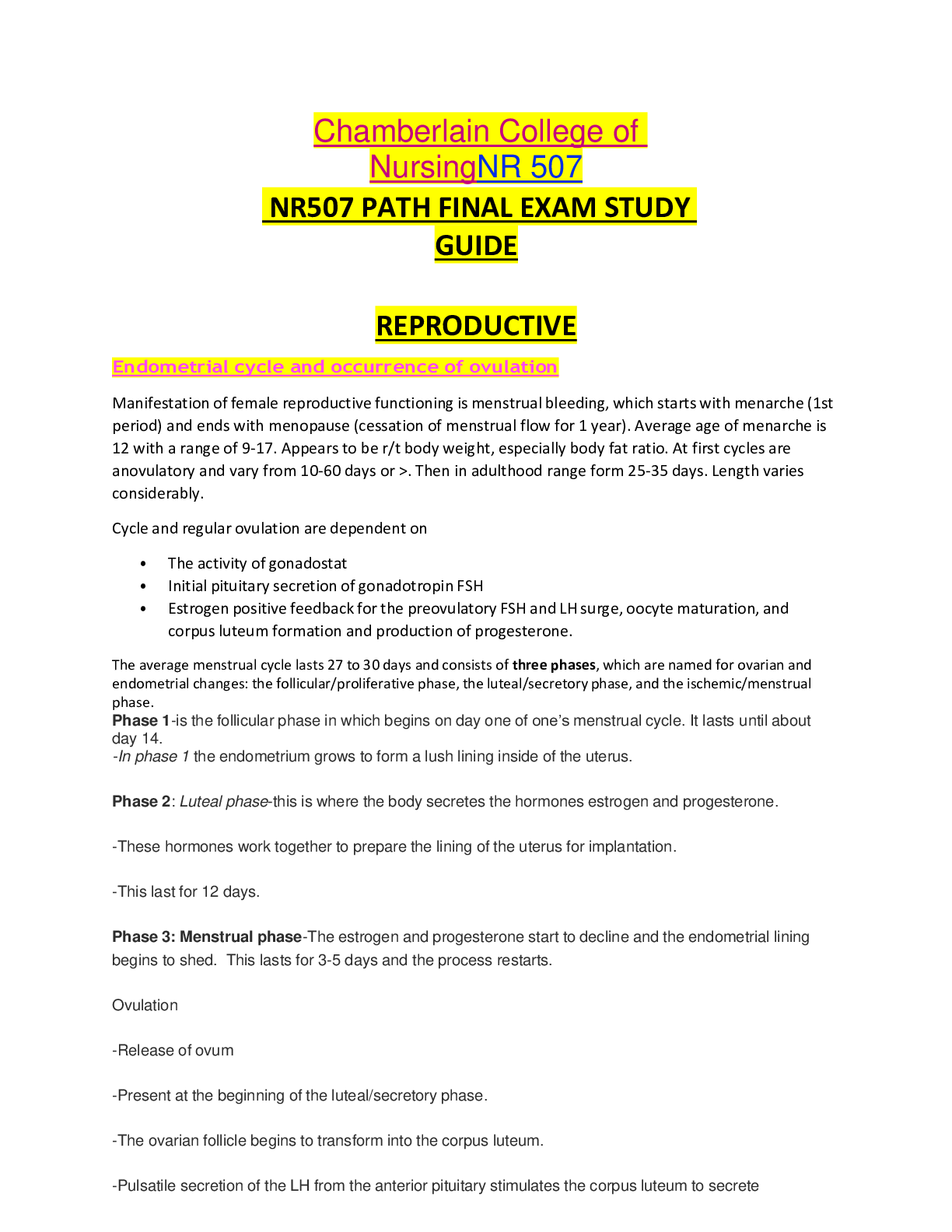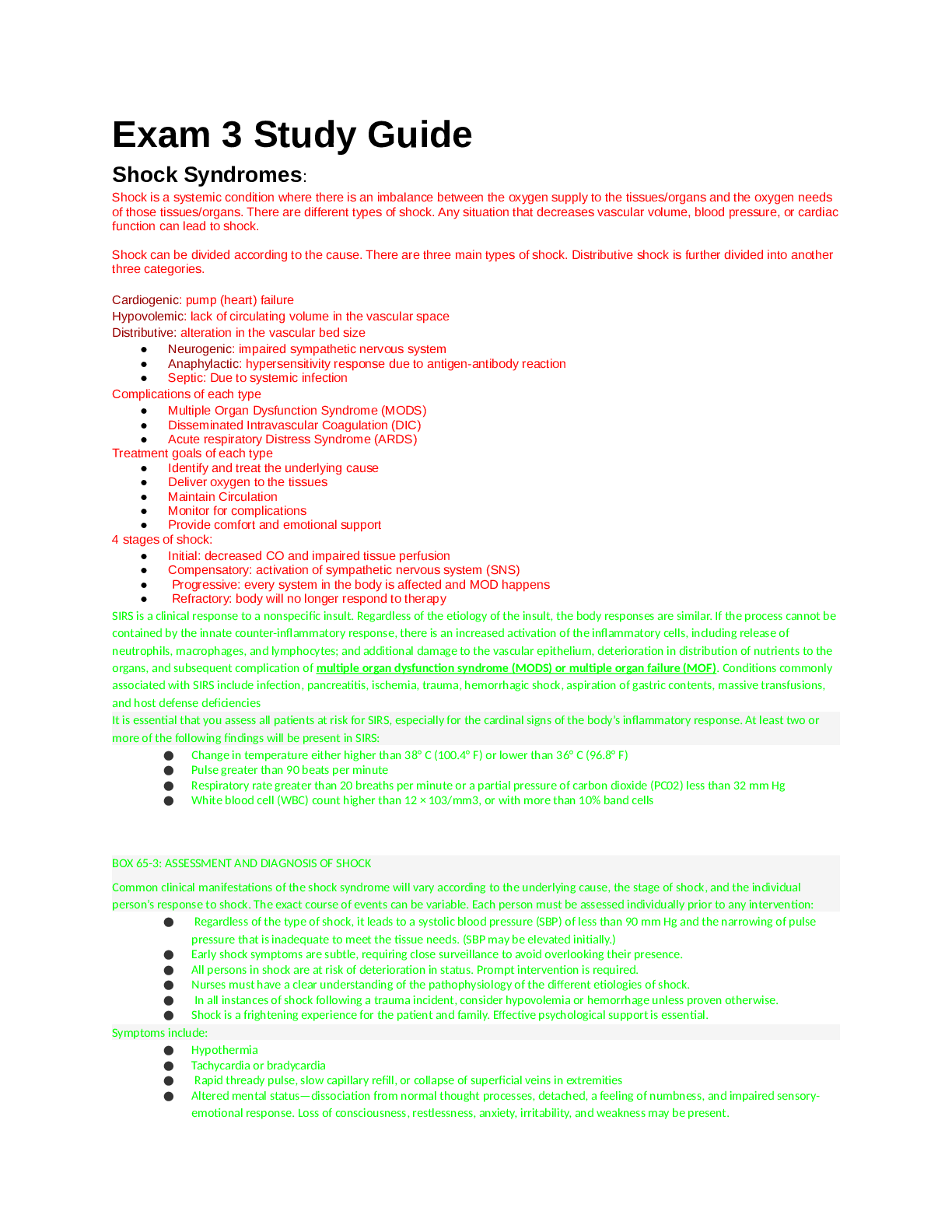*NURSING > STUDY GUIDE > NURS 6541 Pediatrics Midterm Exam Study Guide, Complete Guide For a Good Grade. 2021/2022 (All)
NURS 6541 Pediatrics Midterm Exam Study Guide, Complete Guide For a Good Grade. 2021/2022
Document Content and Description Below
1. Children are able to sit without extra support at what age? 6-8 month olds should be able to sit briefly without extra support, 7-9 months old sit well independently. 2. Types of car seats (see als... o #60): Appropriate ages and weights for forward and rear facing seats. When can kids ride in the front seat of the car? 13 years old. When should they use booster seat? 4-8 years old The AAP recommends: • Infants and toddlers should ride in a rear-facing car safety seat as long as possible, until they reach the highest weight or height allowed by their seat. Most convertible seats have limits that will allow children to ride rear-facing for 2 years or more. • Once they are facing forward, children should use a forward-facing car safety seat with a harness for as long as possible, until they reach the height and weight limits for their seats. Many seats can accommodate children up to 65 pounds or more. • When children exceed these limits, they should use a belt-positioning booster seat until the vehicle’s lap and shoulder seat belt fits properly. This is often when they have reached at least 4 feet 9 inches in height and are 8 to 12 years old. • When children are old enough and large enough to use the vehicle seat belt alone, they should always use lap and shoulder seat belts for optimal protection. • All children younger than 13 years should be restrained in the rear seats of vehicles for optimal protection. 3. Recommended vaccine schedule (many questions): https://www.cdc.gov/vaccines/schedules/hcp/imz/child-adolescent.html (Items 3, 6, 46, and 85 in this study guide address vaccines) 4. Child abuse questions: • What age is it appropriate to have certain types of fractures? Metaphyseal fractures, multiple differently aged posterior rib fractures, complex or multiple skull fractures, spinous process or scapular fractures are suspicious in children. • When should you be concerned about a young infant with tons of bruises (eg - if they are not walking yet would be unusual)? Long bone fx are unusual in young infants. • When is it necessary for you to report? Anytime you suspect any sort of abuse. • Who do you report to? CPS. • Do you face any repercussions? Should not. • Any fracture in a non-ambulatory infant without clear accidental and consistent mechanism should raise a red flag. (items 4, 5 and 29 in this guide address child abuse) 5. Toddler abuse: There will be a list of injuries. Which would be caused by abuse? • Bruises TEN4 by AAP 1. T- torso; E- ear; N- neck; 4- in children less than or equal to 4 years and ANY bruise in children less than 4 months • Injuries tend to occur away from bony prominences (neck, head, buttocks, trunk, hands, and upper arms) 6. Contraindications of vaccinating children. Who should not receive a live vaccine? Immunocompromised, allergic reaction to a previous dose or component of vaccine, history of intussusception for Rotavirus See CDC sheet “vaccines by medical indication” https://www.cdc.gov/vaccines/schedules/hcp/imz/child-indications.html Immunocompromised should not receive: Rotavirus, MMR, influenza (LAIV) or varicella HIV infection should not receive: Influenza (LAIV), MMR or varicella Kidney disease should only cautiously receive influenza (LAIV) Asthma: No influenza (LAIV) CSF leaks: No influenza (LAIV) (Items 3, 6, 46, and 85 in this study guide address vaccines) 7. Young boy with mental retardation. He was a premie. They give a scenario. What caused his mental retardation? eg - understand congenital abnormalities, infections, preemie complications, chromosomal aberrations, brain tumor, serum blood levels • Important risk factors for intellectual disability (ID) include low level of maternal education, advanced maternal age, and poverty. • The causes of ID are extensive and include conditions that interfere with brain development and functioning. Among the known causes of ID, the majority are genetic abnormalities. 1. A genetic cause can be identified in >50 percent of cases of ID in populations referred for specialty evaluation. Down syndrome is the single most common genetic cause of ID. X-linked disorders (including fragile X syndrome) account for approximately 5 to 10 percent of ID in males. De novo dominant mutations are an important cause of severe ID. • Metabolic disorders can cause ID or may be comorbid. ID can present alone or with neurologic abnormalities such as epilepsy or structural brain defects, or with other congenital anomalies. • Nongenetic prenatal causes of ID include congenital infections, and teratogens such as alcohol, lead, and valproate. Perinatal abnormalities account for up to 5 percent of ID and include preterm birth, hypoxia, infection, trauma, and intracranial hemorrhage. Postnatal and acquired causes of ID include accidental or nonaccidental trauma, central nervous system (CNS) hemorrhage, congenital hypothyroidism, hypoxia (eg, neardrowning), environmental toxins, psychosocial deprivation, malnutrition, intracranial infection, and CNS malignancy. 1. Blood lead testing should be performed if the child has not had prior lead screening and/or risk factors for exposure are present (eg, persistent mouthing behavior, pica, living in a house or child care facility built before 1950, recent immigration or home renovation, ethnic remedies, and some parental occupations [smelting, soldering, and auto body repair]). Section 2 Melissa Burris 8. Newborns: What type of vitamin deficienc\ies cause problems? eg - vitamin A, B1, C, D and K Vitamin A Deficiency: Anorexia, dry skin, increased risk for infection, keratinization of epithelial cells of the respiratory tract,night blindness, corneal lesions. Vitamin B1 Deficiency: Beriberi: Muscle weakness, ataxia, confusion, anorexia, tachycardia, heart failure in infants. Vitamin C Deficiency: Scurvy, cracked lips, bleeding gums, slow wound healing, easily bruises. Vitamin D Deficiency: Inadequate bone mineralization, rickets or skeletal malformations, delayed dentition Vitamin K Deficiency: Defective coagulation of blood, hemorrhages, liver injury. 9. Failure to thrive in a 6 mo old: What exams would you think about doing? The reason for failure to thrive in children between the ages of 4 to 8 months is typically feeding problems. A thorough physical exam is important of each body system. Also assess skinfold measurements, vital signs, height, weight, head circumference, hydrations status, presence of dysmorphic features, skin, hair, nails mucus membranes, oral cavity, signs of abuse or neglect. Diagnostic testing: A feeding assessment should be performed including nutritional and feeding history for calories, protein, and micronutrient intake. Assess quality of food for age and ability to suck, chew and swallow. Assess meal patterns such as social nature of feedings with family. Assess feeding history with a 24 hour diet recall. Assess parental understanding of nutrition and feeding children. Assess developmental milestones If the child has inadequate caloric intake then a basic metabolic profile, vitamin D, lead, zinc, iron screening may be done. Albumin may be drawn if severe failure to thrive. If the child has inadequate caloric absorption then a cbc/esr, basic metabolic profile and newborn metabolic screening tests 10. What are the benefits of breastfeeding? eg - lower incidence of many diseases Breast milk is rich in vitamins,minerals,fat, proteins (including immunoglobulins and antibodies), carbohydrates (especially lactose), and promotes growth and development. Breast milk lowers the infants risks for gastroenteritis, necrotizing enterocolitis, acute otitis media, severe lower respiratory tract infections, asthma, atopic dermatitis, type 1&2 diabetes mellitus, obesity, SIDS, and childhood leukemia. Breast milk provides added protection against bacterial, viral, and protozoan illness during infancy. 11. How quickly will babies double, triple, etc their birth weight? Birth to 3 months 25 to 30g/day 3 to 6 months 15 to 20g/day 6 to 12 months 10 to 15g/day 12 months and older 5 to 10g/day The infant should have doubled their birth weight by 4-6 months. 12. Review early reflexive responses in newborns. eg -babinski, moro, swimming and rooting Babinski Reflex:Occurs after the sole of the foot has been firmly stroked. The big toe then moves upward or toward the surface of the foot and the other toes fan out. This reflex is normal in children up to age years old and will disappear as the child gets older and my disappear as early as 12 months. Abnormal reflex is often a sign of CNS disorder. Moro Reflex: Appears at birth and disappears by 4 months.This reflex is tested by a loud noise or drop the infant’s head slightly. The response is the infant will spread their arms and fingers extended and then flex; then the arms come toward each other; crying is possible. Asymmetry indicates paralysis, or fractured clavicle, absence indicates brainstem problem, usually severe persistence also abnormal. Swimming Reflex: A primitive fetal activity marked by well coordinated movements that are exhibited when the infant’s face is placed in water. It normally disappears at 6 months of age. Rooting Reflex: Present at birth disappears between 3-4 months. How to perform: the head is placed midline and then the perioral area is stroked. The response should be that the infant opens their mouth and turns head toward the stimulated side. Absence indicates CNS disease or severely depressed infant. A sleeping infant may not respond. Sucking Reflex: Present at birth and disappears between 3-4 months. Perform by placing nipple or finger 3-4cm inside of mouth. Suck should be strong:push finger up and back and note rate. Absence indicates CNS depression; satiated or sleeping baby may not respond well. Asymmetric Tonic Neck Reflex (ATNR): Present at birth and disappears between age 4-6 months. Place baby supine, turn head to one side; hold for 15 seconds. Arm and leg extend on facial side; arm and leg on other side flex. Obligatory response when a child cannot get out of the position is abnormal; persistence beyond 4-6 months indicates CNS lesion. Palmar Grasp: Present at birth and disappears between 3-6 months. Place finger into infant's palm and press against palm. Infant flexes all fingers around examiner’s finger. Grasp should be strong and equal. Trunk Incurvation(Galant): Present at birth and disappears at 2 months. Suspend baby prone; stroke 2-3cm from spine with fingernail. Baby should flex toward stimulus. Asymmetry is significant tests for spinal cord lesion; should not persist after 6 months. Stepping: Present at birth until 6-8 weeks. Infant is held as though weight bearing with feet on the surface. Infant steps along raising one foot at a time. Tests brainstem, spinal column; absence indicates paralysis or depressed baby. Crossed Extension: Present from birth to 4 months. Passively extend one leg and press knee to table; prick sole of foot with pin. Toes should curl down. Plantar Grasp: Present at birth and disappears between 8-10 months. Place finger firmly against base of toes. Toes should curl down. Tests S1-S2 spinal nerves; lessens by 8 months; suspect any asymmetry. Section 3 Sarah Lynn Hughes 13. Be familiar with language development. eg - red flags, when should kids be speaking in 3-4 word sentences, complete sentences, etc. 12-18M - uses all vowels, may constants, articulates 15-20 words and understands 50 18-24M -imitates two word combinations, begins to combine words, begins to use pronouns, names self 24-30M- bables less, 2-3 word sentences, repeats two numbers, asks simple questions, can repeat simple phrases and sentences 30-36M -answers questions, repeats three numbers, uses regular plurals, help tell simple story 36-42M- understands and answers (Cold, hungry), mostly three to four word sentences, gives full name, begins to relate events, lots of questions 42-48M- uses prepositions, tells stories, can give function of objects. Repeats longer than 6 word sentences, repeat four numbers, gives age 14. Which adolescent is at greatest risk for developing anorexia nervosa? Be familiar with this disorder. Those Females greater than males (9:1), Athletes more likely to develop eating disorders esp. who participate in sports that are based on weight. Individual risk factors: middle to high socioeconomic status, divorced families, chornic disease, recent weight loss in a prev obese person, personality disorders, strong will, hx of child abuse Pg 381-382 [Show More]
Last updated: 1 year ago
Preview 1 out of 43 pages
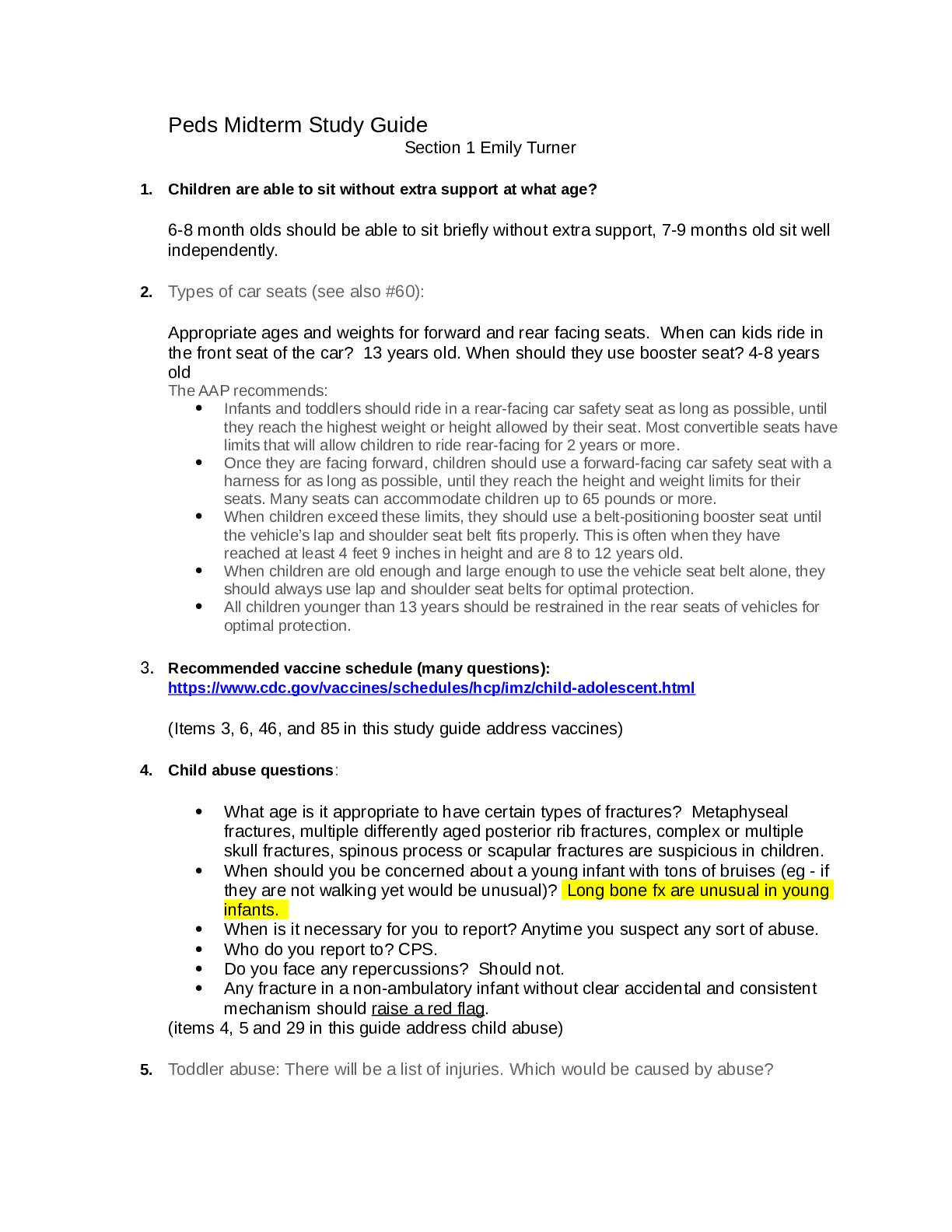
Reviews( 0 )
Document information
Connected school, study & course
About the document
Uploaded On
Aug 29, 2021
Number of pages
43
Written in
Additional information
This document has been written for:
Uploaded
Aug 29, 2021
Downloads
0
Views
30




